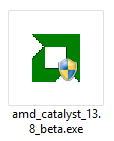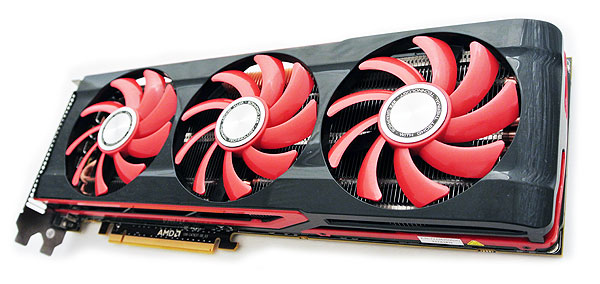Dual-GPU Battle: Does Frame Pacing In Catalyst 13.8 Turn The Tide?
We take AMD's Catalyst 13.8 beta driver for a spin to see if its frame pacing feature fixes CrossFire's dropped and runt frame issues. Follow along as we compare the Radeon HD 7990 to Nvidia's GeForce GTX 690 in seven popular titles, with video to match!
AMD's Catalyst 13.8 Beta Driver Introduces Frame Pacing
Earlier this year, Nvidia introduced its Frame Capture Analysis Tool, giving us the ability to measure graphics performance in a new way. In essence, we capture the signal coming straight out of the DVI port losslessly, recording it onto an array of SSDs. The video file is sent through a series of Perl scripts that tell us how long each rendered frame is on-screen. This process incidentally also lets us know if a frame is clipped super-short (referred to as a runt frame) or if it doesn't show up at all (a dropped frame).
You can read more about the testing we've done using FCAT in Challenging FPS: Testing SLI And CrossFire Using Video Capture, and also in any number of the graphics card reviews we've published since then. To make a long story short, though, on multiple occasions, we've shown that two AMD Radeon graphics card working cooperatively in CrossFire incur a significant number of dropped and runt frames as both GPUs try to render as quickly as possible. Because those frames aren't perceived as you game, the benefit of having two GPUs decreases. Nvidia avoids this through a metering technology that deliberately displays frames in a more consistent manner.
At its best, critical journalism can be a catalyst for change (no pun intended). AMD let us know several months ago that it was working to implement a frame pacing feature in its driver that would similarly meter out frames, inserting small delays where necessary in order to display them at a consistent interval. As you no doubt already know, frame pacing made its debut late last month in the Catalyst 13.8 beta driver. The feature is turned on by default, and company representatives say that observed frame rates shouldn't be negatively affected in most games.
AMD's work is far from over, though. Its 13.8 driver is the first step in this new direction. But support for frame pacing is limited to DirectX 10- and 11-based games on one monitor at resolutions up to 2560x1600. That means it doesn't work in DirectX 9 games, OpenGL-based games, or in multi-monitor arrays. Compatibility with those APIs and technologies will follow in a phase-two driver, though there's no estimate for its arrival. Eyefinity is probably the biggest loss, since the scaling of CrossFire practically begs for a three-screen setup. We'll take what we can get though, and we're eager to put AMD's implementation of frame pacing through our suite of tests using one display at 2560x1440.
The Catalyst 13.8 beta driver also offers OpenGL 4.3 support, though of course it doesn't work in conjunction with frame pacing. The beta driver accommodates saving custom OpenGL settings on a per-application basis, and Catalyst Application Profiles (CAP) updates also add OpenGL-based titles. In addition, AMD claims a performance speed-up of up to 7% in Metro: Last Light.
You probably noticed that the Radeon HD 7990 is down $300, from $1000 to $700. Although AMD's flagship is more power-hungry than Nvidia's GeForce GTX 690, and not suited, we determined, in quad-CrossFire configurations, there's no way to simply shrug off such a huge price cut. With that in mind, this is a great opportunity to reconsider the 7990 with an update purported to fix the issues we discovered back in April.
Get Tom's Hardware's best news and in-depth reviews, straight to your inbox.
Current page: AMD's Catalyst 13.8 Beta Driver Introduces Frame Pacing
Next Page Test System And BenchmarksDon Woligroski was a former senior hardware editor for Tom's Hardware. He has covered a wide range of PC hardware topics, including CPUs, GPUs, system building, and emerging technologies.
-
jimmysmitty The drivers do seem to make the FPS much smoother overall. BF3 is a good example with the game dropping then jumping and so on but 13.8 made it a much smoother line.Reply
Its good to see that work is being done to make it more competitive but I fear that its almost pointless since Hawaii XT is on its way and will be a better option in CFX.
Also Laras hair on the GTX690 was funny. Just fluttering around like crazy. I guess TressFX does make a difference after all. -
jase240 This is great, AMD is finally getting on par for dual GPU config with Nvidia!!Reply
This might make 2 AMD cards a way better value than Nvidia!! -
viewgamer The Metro Last Light benchmark is a modern example of the way Nvidia handles its business.Reply
These strong arm tactics to eliminate the competition aren't beneficial to anyone, Nvidia's less than pleasant business practices is why I try to support AMD whenever possible. -
viewgamer The Metro Last Light benchmark is a modern example of the way Nvidia handles its business.Reply
These strong arm tactics to eliminate the competition aren't beneficial to anyone, Nvidia's less than pleasant business practices is why I try to support AMD whenever possible. -
Emma Long Apart from Metro the 7990 tied the 690 on two occasions and beat it in the rest, that's very encouraging from the red team.Reply
The situation with Metro last light seems peculiar to me, we've seen things like this before with Nvidia sponsored titles & I thought the industry was passed this sort of thing.
Nvidia can compete, it has proven so time and time again, which makes this all the more reprehensible.
I would like to see an Nvidia that competes on the basis of performance & features not strong-arming developers.
Back to the 7990, so overall it's faster than the 690 and significantly less expensive, at $700 the 7990 puts very serious pressure on the 780 so I'd like to see the 780 added into the benchmarking mix as well. -
CarlitoBanderas What's the point of a 690 ? in 1080o & 1440p it's slower than the 7990, in 4K & multi monitor it doesn't have enough memory & it's 300 bucks more expensive.Reply
Nvidia needs to bring out a 790 asap, the 690 is not competitive anymore. -
m32 I've enjoyed this article, Toms. We've seen the flaws and now some improvements with the 7990.Reply -
aggroboy Reply
Enthusiast mindshare is still dominated by the GTX Titan, so Nvidia can afford to stand pat.11476339 said:What's the point of a 690 ? in 1080o & 1440p it's slower than the 7990, in 4K & multi monitor it doesn't have enough memory & it's 300 bucks more expensive.
Nvidia needs to bring out a 790 asap, the 690 is not competitive anymore.


